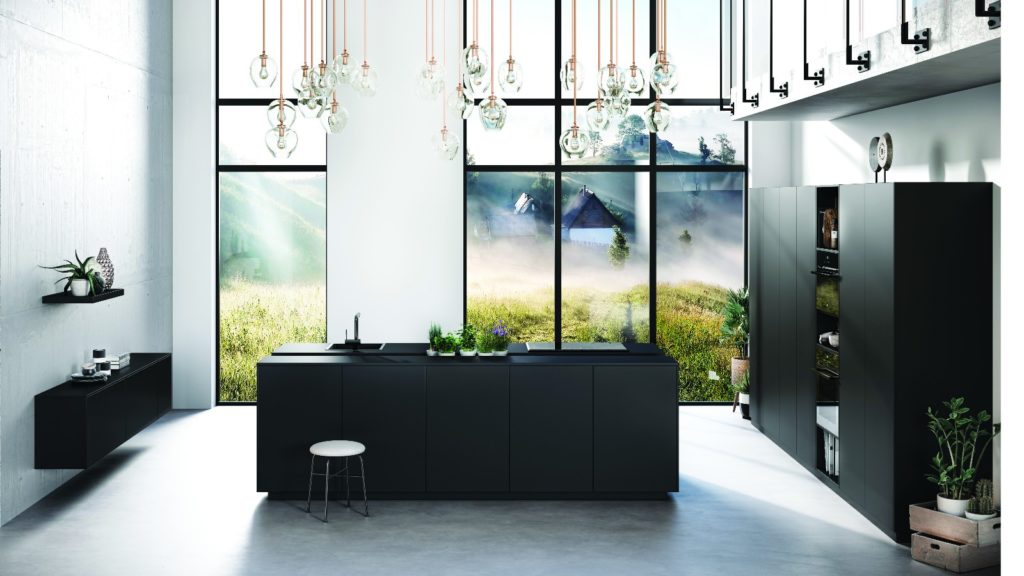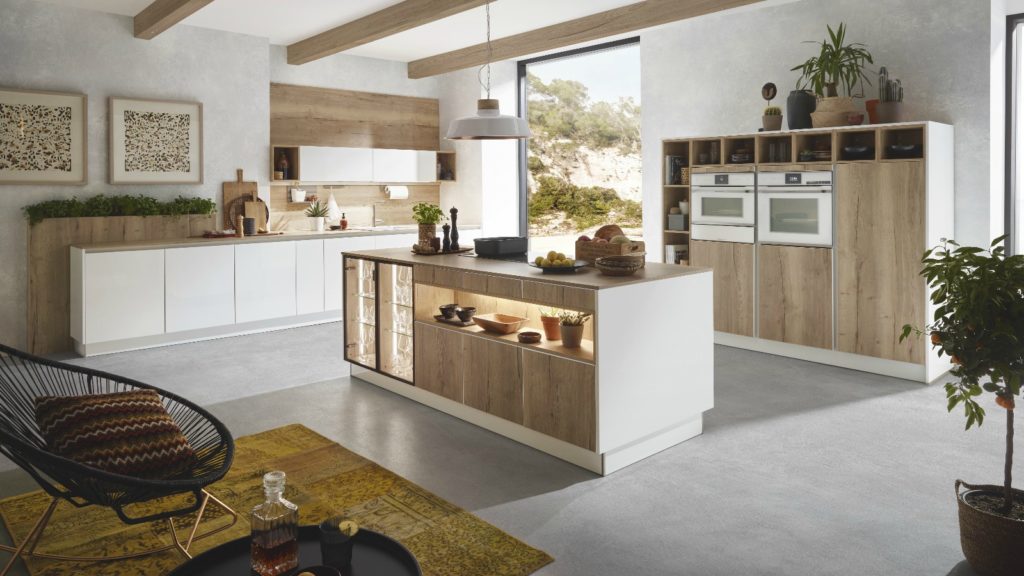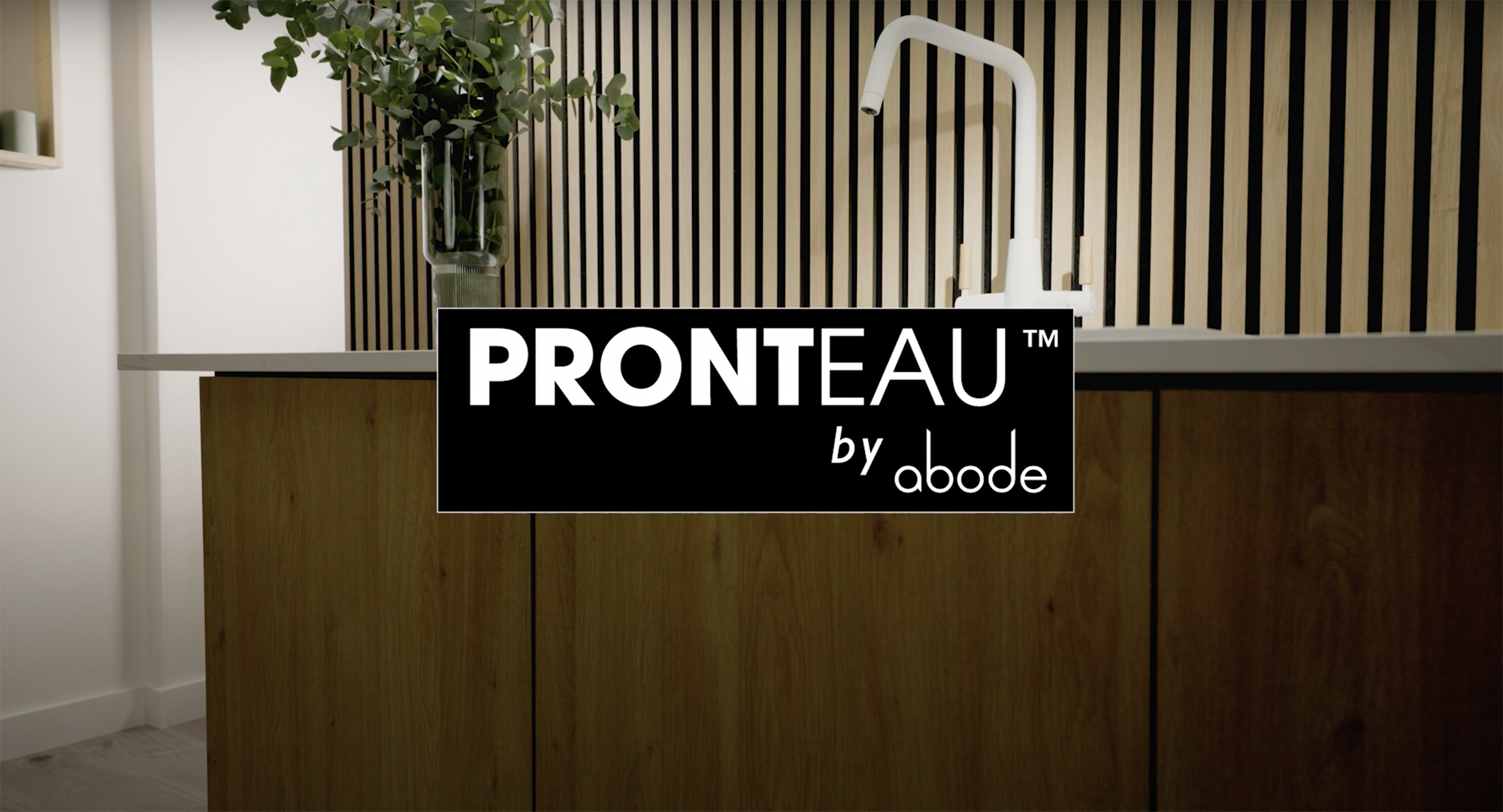Fusing the natural world with home environments, we look at how designers can enhance consumers’ homes and well-being with biophilic kitchens

German manufacturer Rotpunkt committed to produce 100% carbon neutral kitchens. Its Core DM range features a kitchen island which offers space for fresh herbs
Biophilic design, meaning a love of nature, focuses on human connectivity to the natural environment.
Used in architecture, it is a term popularised by American biologist Edward Wilson in the 1980s when he saw how urbanisation was leading to a disconnect to the outside world and having a detrimental effect on peoples’ health.
Sponsored Video
As people continue to migrate to cities, with an “always on” mentality to technology, and the stresses that entails, the need for a relationship with nature is becoming even more important in home design.
It’s not psychobabble, scientific studies have long made the connection between nature and healing.
So incorporating elements of nature into homes can actually improve the well-being of residents.
It can also reap financial rewards, too, as Oliver Heath Design Group points out: “Homes can become more calming and restorative, with 7-8% less crime attributed to areas with access to nature and can command an increase of 4-5% in property price.”
Using authentic materials

Ontario from Stormer is pictured in a textured Halifax Oak wood with Como Snow White high gloss lacquer. The Halifax Oak finish is available across worktop and bespoke panels to create feature walls and shelving
Although the term biophilic design may be new and trending, the chances are kitchen designers may use its principles without even realising it.
When the creation of house extensions featuring open-plan kitchens became de rigeur, it marked the first tentative steps in biophilic design – “bringing the outdoors in”.
But it has moved on from the location of the kitchen in the home to the design of the project, itself.
Now the highly engineered kitchen must provide next-level comfort using authentic materials.
Think of the trend towards timber cabinetry, whether plain or painted, alongside a raft of stone worktops finishes.
Managing director of Industville Marketa Rypacek explains: “The natural world is having a greater influence on kitchen design whether it be classical or industrial style.”
Most recently, manufacturers have even introduced planters into the kitchen providing food ingredients in the form of flora with the inclusion of herb boxes in furniture and even in Falmec’s Spazia hood.
Head of UK operations at Rotpunkt Matt Phillips comments: “Incorporating a combination herb box in the kitchen is perfect for injecting the natural world into an urban environment, as it is both sustainable and aesthetically pleasing.
“Although it is a relatively small detail in the kitchen, its overall impact is significant.”
Better than nature
Such has been the demand for natural environments in the home, manufacturers have worked to broaden the market, diligently recreating lifelike woodgrains and marble veining in a move called hypernature.
Not only has this made the market for natural aesthetics, more accessible, but it can also offer additional benefits to the natural materials, such as non-porosity and stain resistance to name but a few.
Matt Phillips of Rotpunkt agrees commenting the natural world “has certainly become more prominent as a design influences in general over the past few years due to a number of factors including a) improvements in technology, which have led to more super-realistic natural effect kitchen schemes to replicated genuine raw materials without the extra weight, price tag and more recently carbon footprint b) the desire to contrast finishes and materials in the kitchen and c) the design world’s fascination with industrial style timber effects, wood panelling and dark, earthy tones.”
He continues to explain how the natural world has influenced Rotpunkt’s portfolio, adding: “We are also enhancing our Wood Unlimited collection of doors with new styles, including a timber effect with an eye-catching metallic finish which highlights the natural knots and whirls of the wood.”
Natural colour palette

Rialto, from Crown, is presented in earthy and natural tones with neutral metallic high gloss titanium wall units. It is shown with dual islands framed in Textura anthracite ceramic effect
The indirect affiliation with nature can also be interpreted through the use of colour in the kitchen, inspired by the outdoor world.
Such has been the influence of the environment Dulux recently revealed Tranquil Dawn as its colour of the year 2020, a shade of green inspired by the morning sky.
In terms of kitchen finishes, Matt Philips adds: “In style for 2020 will be a sedimentary colour palette made up of white and grey to brown and black, along with olive green undertones and shades of stone.”
He adds: “We have HPL super matt doors in three brand new natural-inspired colour options in 2020.”
Lighting and extraction
But biophilic design is not simply about raw materials, colours and textures, it also needs to contribute to health and well-being.
Consumers are increasingly choosing to adopt heathier lifestyles and products that allow them to do this – such as appliances that offer healthier prep options such as refrigeration which prolongs the life and vitamins of fresh food.
Steam ovens and filtered water taps – also tap into biophilic kitchen design.
Arguably less obvious but integral elements of kitchen design essential to well-being are lighting and air quality.
Kitchen extractors are increasingly being designed with sensors to manage air quality, keeping it free of pollutants such as odours and steam, while furniture manufacturers have looked at reducing off-gassing with low emission Volatile Organic Compound chipboard.
And there is a vast array of products specifically created for task, general and mood lighting, as well as roof lights to flood extensions with natural light.
Marketa Rypacek of Industville says: “The most common way to connect the natural environment in kitchen design is by using textures, raw materials and importantly – lighting.
“Lighting plays a key part in the biophilic design trend and so should not be overlooked.
“Considering the placement of lights and layering different types of fixtures to create the illusion of plenty of natural light is key.”
Fundamental design principle
With consumers now choosing to spend more time in the kitchen, cooking, eating, socialising and working, there will be even greater emphasis on creating a space using biophilic principles.
This macro design trend will have more endurance than the latest appliance or furniture finish.
It’s the view of Marketa Rypacek says: “With so many benefits, and being incredibly stylish too, the biophilic design trend has real staying power and we see it becoming even bigger over the next few years; particularly in kitchen spaces where people spend a lot of their time.
“With health and wellbeing more topical than ever, this trend has the potential to become fundamental to any design project.”
And Matt Philips agrees, it will grow in importance for kitchen designers: “I think that biophilic design is here to stay and, in time, it may well become an established part of kitchen design alongside ergonomics, space planning and overall construction of the kitchen.”



